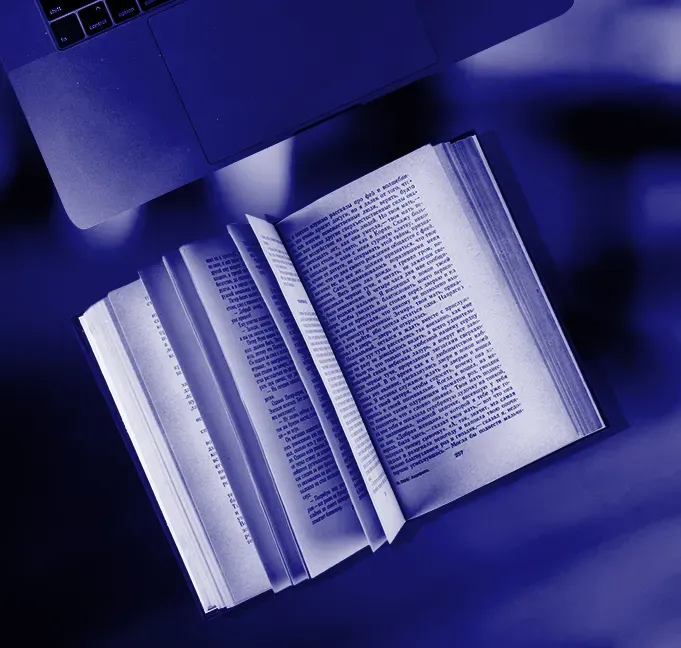Introduction
Artificial Intelligence (AI) and Machine Learning (ML) are the two buzzwords that seem to be driving the present technological revolution. AI encompasses a wide range of tasks that mimic the intelligence possessed by humans while ML focuses specifically on training machines to learn from the data that they have access to. Both these are used interchangeably but as you can see there is a fair bit of difference in terms of AI vs. Machine Learning.
ML and AI have been revolutionising various sectors by improving efficiency, capabilities, and levels of accuracy in those domains. This includes the likes of the following:
- healthcare
- finance
- retail
- manufacturing
- transportation
- education
In this blog, we will attempt to clear out the distinctions between AI and ML to make sure that you all have a clear idea of what both these entail. We will also talk about their relationship, the misconceptions people have in this regard, and the career opportunities in both these technologies.
Know More About Artificial Intelligence vs. Machine Learning Request a call →

What is AI?
- Definition and scope: AI can be described as a broad field that deals with developing computer systems that can perform tasks that normally require the intelligence of humans.
- Applications: Robotics and Natural Language Processing(NLP) are the two major applications of AI. It is increasingly being used for decision-making, problem-solving, learning, and speech recognition.
- Impact on healthcare: AI has made a significant impact on healthcare, making diagnoses more accurate, curating personalised treatment plans, and predicting patient outcomes. The sector is also using AI tools to identify diseases, analyse medical images, and suggest potential treatments. This, in turn, is improving the care being provided to the patients and lowering the burden placed otherwise on healthcare professionals.
- Impact on finance: In the finance sector AI is analysing huge amounts of data for detecting fraud, automating trading, and predicting market trends. A major innovation in this regard is the Robo-advisor. These devices are using AI to offer investment advice and are becoming more popular by the day.
- Impact on retail: The retail industry has been reshaped by AI which has enabled personalised shopping experiences in this domain.
- Impact on manufacturing: AI is right now driving the fourth industrial revolution that is popularly being referred to as Industry 4.0.
- Impact on transportation: Autonomous vehicles can be regarded as being among the most exciting innovations brought forth by AI in the domain of transportation.
Apply Here For Best MCA with specialization in ML & AI
What is ML?
- Definition and purpose: ML is a subset of AI which, at its core, focuses on the basic concept of helping machines learn from data and enhance their performance with time. Thus, the focus here is more on the likes of statistical models and algorithms.
- Types of ML: Supervised learning, unsupervised learning, and reinforcement learning are the three types of ML. In the case of supervised learning, ML algorithms learn from labelled data and make predictions on the basis of that. In unsupervised learning, they find patterns in data sans labels. In reinforcement learning, they learn by way of feedback and through interaction with the environment they are in.
- Real-world examples of usage of ML: The most prominent examples of the impact that ML has made are recommendation systems, predictive analytics, and autonomous vehicles. However, there are so many industries where it has assumed such a prominent role nowadays.
- Impact on healthcare: In the healthcare sector, it is being used to reduce costs and improve patient outcomes. In the financial domain, people are using ML to improve financial decision-making and detect fraud.
- Impact on retail: Retail entities are using ML to provide better service to their customers and improve their sales.
- Impact on transportation: In the transportation sector, ML has helped with the improvement of safety levels and increased efficiency.
- Impact on energy: The energy industry is also using ML for purposes such as predictive maintenance, cost savings, and optimization.
- Impact on agriculture: In the domain of agriculture, it has helped provide more intelligent methods of predictions and planning along with improving crop yields.
Apply Here For Best MCA with specialization in Machine Learning
Key Differences between AI and Machine Learning
- Core concepts: AI includes numerous tasks that mimic human intelligence while ML focuses particularly on training machines to learn from data. AI develops computer systems that can perform tasks that usually need human intelligence while ML focuses on helping machines perform better with time by learning from data. The most prominent examples of tasks performed by AI are problem-solving, speech recognition and learning, and decision-making. The training models of ML feature huge datasets that let algorithms identify patterns and make informed decisions without the need for explicit programming. In terms of Artificial Intelligence vs. Machine Learning, this is the first point that you need to know and understand.
- Dependency: AI does include ML techniques but that is not what its offerings are limited to. It also includes other methods such as neural networks and expert systems.
- Applications across industries: AI differs from ML in terms of applications but it does use the latter for the likes of problem-solving and decision-making. Online recommender systems, Google search algorithms, and Facebook auto friend tagging suggestions are the most prominent examples of ML applications. Following are the most prominent examples of AI applications:
- Siri
- customer support that uses chatbots
- expert systems
- online gaming
- humanoid robots
What is ML?
- Definition and purpose: ML is a subset of AI which, at its core, focuses on the basic concept of helping machines learn from data and enhance their performance with time. Thus, the focus here is more on the likes of statistical models and algorithms.
- Types of ML: Supervised learning, unsupervised learning, and reinforcement learning are the three types of ML. In the case of supervised learning, ML algorithms learn from labelled data and make predictions on the basis of that. In unsupervised learning, they find patterns in data sans labels. In reinforcement learning, they learn by way of feedback and through interaction with the environment they are in.
- Real-world examples of usage of ML: The most prominent examples of the impact that ML has made are recommendation systems, predictive analytics, and autonomous vehicles. However, there are so many industries where it has assumed such a prominent role nowadays.
- Impact on healthcare: In the healthcare sector, it is being used to reduce costs and improve patient outcomes. In the financial domain, people are using ML to improve financial decision-making and detect fraud.
- Impact on retail: Retail entities are using ML to provide better service to their customers and improve their sales.
- Impact on transportation: In the transportation sector, ML has helped with the improvement of safety levels and increased efficiency.
- Impact on energy: The energy industry is also using ML for purposes such as predictive maintenance, cost savings, and optimization.
- Impact on agriculture: In the domain of agriculture, it has helped provide more intelligent methods of predictions and planning along with improving crop yields.
Apply Here For Best MCA with specialization in Machine Learning
Key Differences between AI and Machine Learning
- Core concepts: AI includes numerous tasks that mimic human intelligence while ML focuses particularly on training machines to learn from data. AI develops computer systems that can perform tasks that usually need human intelligence while ML focuses on helping machines perform better with time by learning from data. The most prominent examples of tasks performed by AI are problem-solving, speech recognition and learning, and decision-making. The training models of ML feature huge datasets that let algorithms identify patterns and make informed decisions without the need for explicit programming. In terms of Artificial Intelligence vs. Machine Learning, this is the first point that you need to know and understand.
- Dependency: AI does include ML techniques but that is not what its offerings are limited to. It also includes other methods such as neural networks and expert systems.
- Applications across industries: AI differs from ML in terms of applications but it does use the latter for the likes of problem-solving and decision-making. Online recommender systems, Google search algorithms, and Facebook auto friend tagging suggestions are the most prominent examples of ML applications. Following are the most prominent examples of AI applications:
- Siri
- customer support that uses chatbots
- expert systems
- online gaming
- humanoid robots
Key Differences between AI and Machine Learning
- Core concepts: AI includes numerous tasks that mimic human intelligence while ML focuses particularly on training machines to learn from data. AI develops computer systems that can perform tasks that usually need human intelligence while ML focuses on helping machines perform better with time by learning from data. The most prominent examples of tasks performed by AI are problem-solving, speech recognition and learning, and decision-making. The training models of ML feature huge datasets that let algorithms identify patterns and make informed decisions without the need for explicit programming. In terms of Artificial Intelligence vs. Machine Learning, this is the first point that you need to know and understand.
- Dependency: AI does include ML techniques but that is not what its offerings are limited to. It also includes other methods such as neural networks and expert systems.
- Applications across industries: AI differs from ML in terms of applications but it does use the latter for the likes of problem-solving and decision-making. Online recommender systems, Google search algorithms, and Facebook auto friend tagging suggestions are the most prominent examples of ML applications. Following are the most prominent examples of AI applications:
- Siri
- customer support that uses chatbots
- expert systems
- online gaming
- humanoid robots

Also Read: Future of AI - How It Is Impacting the Society
- Scope of intelligence: AI aims to simulate human intelligence broadly and it encompasses areas such as reasoning, perception, problem-solving, and language understanding. On the contrary, ML focuses primarily on developing algorithms that let systems make predictions with the help of data-based learning. So, in that sense, the scope of ML is limited compared to that of AI.
- Approach to problem solving: Often AI uses knowledge representation and symbolic reasoning to let systems manipulate symbols to solve complex problems. On the other hand, ML depends heavily on pattern recognition and statistical techniques to learn from data. AI focuses more on complex and diverse tasks while ML focuses more on trained tasks.
- Degree of autonomy: AI systems are capable of operating autonomously and as such can make decisions and take actions based on learned patterns and/or predefined rules. ML models, however, need training data and might need human intervention from time to time so that results can be interpreted and algorithms can be fine-tuned.
- Task performance: AI creates intelligent systems that can perform any task as a human being would do while ML teaches machines by using data to provide accurate results and perform certain tasks.
- Subsets: ML is one of the main subsets of AI along with deep learning. On the other hand, the main subset of ML is deep learning.
Call Us For Any Query: 1800 102 3434
Relationship between AI and ML
- Interdependence: There are so many ways in which ML contributes to enhancing the capabilities of AI such as data-driven learning, model development and training, feature extraction, pattern recognition, and continuous improvement. ML is used in several AI tasks such as object and image recognition, NLP, predictive analytics, and personalised recommendations, to name a few. AI systems can use ML techniques to analyse vast amounts of data, identify patterns, and make informed decisions and forecasts.
- Synergies: ML is a subset of AI that focuses on enabling machines to learn using data and perform better over time without any need for explicit programming as such. ML algorithms can make predictions and identify patterns by analysing vast datasets, and this improves the capabilities of AI-based systems. For example, in the case of voice recognition AI is helped by ML in understanding and responding better to spoken language.
- Future directions: It is expected that AI and ML together will revolutionise several industries. In the domain of healthcare, they are supposed to offer personalised treatment plans, AI-assisted surgery, and early detection of diseases. You can expect them to make self-driven cars a reality sooner rather than later. They are also supposed to make personalised learning experiences the norm.
Misconceptions about AI and ML
- Common myths: There are several myths about AI and ML with the most prominent one being that they will take jobs meant for humans. The truth is that they will automate repetitive tasks freeing up humans to maximise their strengths viz. creativity, social interaction, and problem-solving. It is also wrong to assume that these technologies are robots or sentient beings capable of feeling emotions. The truth is that they work on complex algorithms rather than deep feelings.
- Clarifications: The future role that AI and ML will play in the context of our society will be one of collaboration rather than confrontation. This is the reason why responsible AI systems such as Bias Detection, Explainable AI, and Human-in-the-Loop Systems are being developed. This is also where values like transparency, accountability, and fairness become so important. When implemented properly this will significantly improve the quality of our lives and make things so much easier.
Career Opportunities in AI and ML
- Growing demand: Both AI and ML sectors are growing and thus throwing up new jobs for qualified aspirants. Following are the top jobs in the sector along with their average yearly salaries:
- Head of Data Science – Rs 56 lakhs
- Principal Data Scientist – Rs 49.4 lakhs
- Chief Data Officer – Rs 47.1 lakhs
- Director of Data Engineering – Rs 38 lakhs
- AI Architect – Rs 34.5 lakhs
- Interdependence: There are so many ways in which ML contributes to enhancing the capabilities of AI such as data-driven learning, model development and training, feature extraction, pattern recognition, and continuous improvement. ML is used in several AI tasks such as object and image recognition, NLP, predictive analytics, and personalised recommendations, to name a few. AI systems can use ML techniques to analyse vast amounts of data, identify patterns, and make informed decisions and forecasts.
- Synergies: ML is a subset of AI that focuses on enabling machines to learn using data and perform better over time without any need for explicit programming as such. ML algorithms can make predictions and identify patterns by analysing vast datasets, and this improves the capabilities of AI-based systems. For example, in the case of voice recognition AI is helped by ML in understanding and responding better to spoken language.
- Future directions: It is expected that AI and ML together will revolutionise several industries. In the domain of healthcare, they are supposed to offer personalised treatment plans, AI-assisted surgery, and early detection of diseases. You can expect them to make self-driven cars a reality sooner rather than later. They are also supposed to make personalised learning experiences the norm.
Misconceptions about AI and ML
- Common myths: There are several myths about AI and ML with the most prominent one being that they will take jobs meant for humans. The truth is that they will automate repetitive tasks freeing up humans to maximise their strengths viz. creativity, social interaction, and problem-solving. It is also wrong to assume that these technologies are robots or sentient beings capable of feeling emotions. The truth is that they work on complex algorithms rather than deep feelings.
- Clarifications: The future role that AI and ML will play in the context of our society will be one of collaboration rather than confrontation. This is the reason why responsible AI systems such as Bias Detection, Explainable AI, and Human-in-the-Loop Systems are being developed. This is also where values like transparency, accountability, and fairness become so important. When implemented properly this will significantly improve the quality of our lives and make things so much easier.
Career Opportunities in AI and ML
- Growing demand: Both AI and ML sectors are growing and thus throwing up new jobs for qualified aspirants. Following are the top jobs in the sector along with their average yearly salaries:
- Head of Data Science – Rs 56 lakhs
- Principal Data Scientist – Rs 49.4 lakhs
- Chief Data Officer – Rs 47.1 lakhs
- Director of Data Engineering – Rs 38 lakhs
- AI Architect – Rs 34.5 lakhs

- Skills required: If you want to forge a successful career in AI and ML you have to be proficient in programming languages like Python, Java, and R. You must also possess a strong foundation in mathematics such as linear algebra, statistics, and calculus. It is also important that you know ML frameworks and libraries such as TensorFlow, sci-kit-learn, and PyTorch. You must also have some experience with tools of data analysis and manipulation like Structured Query Language (SQL), NumPy, and Pandas.
Educational pathways: You must pursue relevant certifications and courses such as Master of Computer Applications (MCA) with specialisation in ML & AI, MCA with specialisation in ML, and Bachelor of Computer Applications (BCA) with specialisation in Cloud And Security from Amity Online. Pursuing these courses will provide you with the education that you need to gain an edge in such competitive careers.
Also Read:-Machine Learning: A Comprehensive Guide it's Importance and Benefits
Are you ready to take the next step in your career ? EnrolL Now →
Conclusion
You must understand these contexts because of the rate at which these technologies are advancing. If you do not you will get left behind and this is what you cannot afford to do, especially when you are looking to make a living in the AI and ML sector. You should also pursue the best online programmes and courses so that you can gain comprehensive knowledge of both technologies. This would prove to be academically immensely beneficial to you and also help you land the best jobs in the sector and perform better than others who do not have the same level of education as you.




